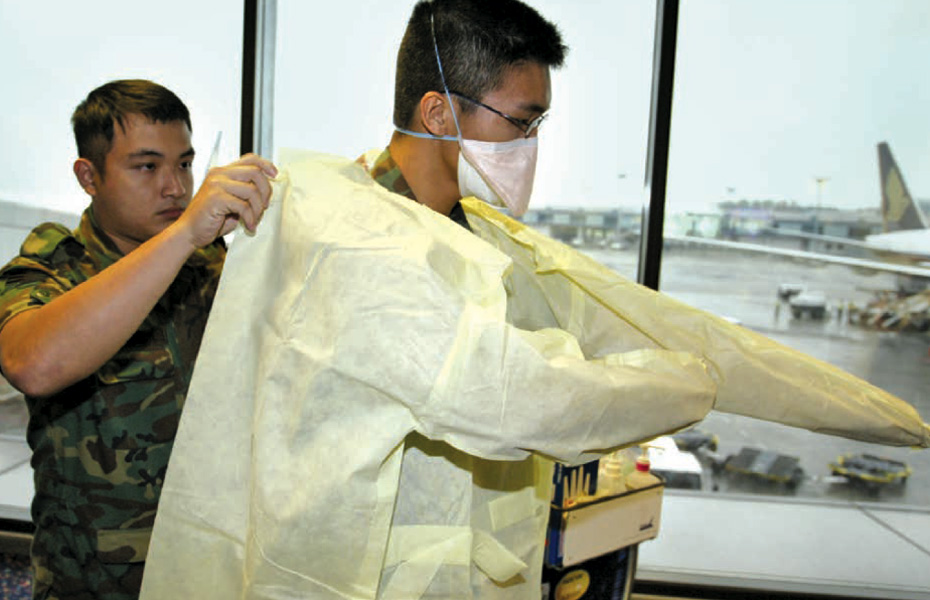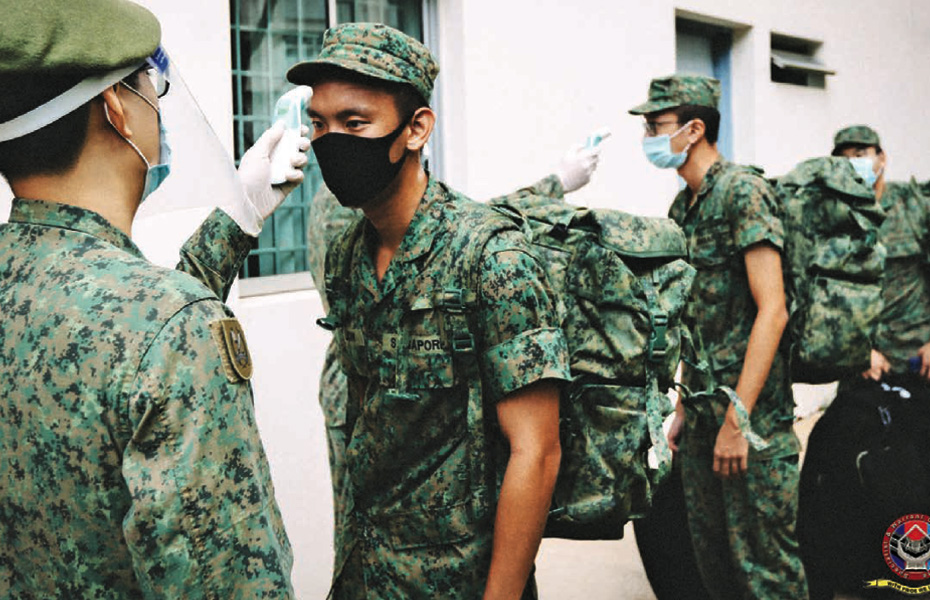The mission was clear. The Singapore Armed Forces (SAF) had to remain operationally ready with no compromise to its ability to protect Singapore and Singaporeans even as it supported Whole-of-Government (WoG) efforts to fight COVID-19, all while protecting the health of every soldier, sailor, and airman. The SAF had to be ready and able to take on new tasks in support of the national effort against the disease, all without letting up on its current operations and force-generation activities. The scale of the mission was daunting.
Fortunately, the SAF was not starting from a blank slate. The Joint Operations Department (JOD) team, led by Director of Joint Operations (DJO) BG David Neo, could draw on the research from local and foreign health agencies to quickly develop some understanding of the virus, even though there was still much that was uncertain at that time. The SAF could also draw on its experiences with SARS in 2003 and the H1N1 swine flu in 2009 to develop operational responses to this new virus.

Lessons learnt from the SARS experience in 2003 and established baseline pandemic preventive measures such as implementing cohorting practices and donning Personal Protective Equipment.
Source: Reuters/ Mr David Loh
The SAF was also fortunate to have many experienced officers in the Ops community who had run SAF operations during those outbreaks, and could draw upon their expertise. Moreover, the community had worked closely together on several operations recently, including the drone disruptions at Changi Airport and the maritime incursions off Tuas, and there was a strong sense of camaraderie.
So, the SAF was able to act decisively and quickly implement measures to stem the spread of COVID-19 among its personnel. JOD also worked closely together with the Services' Operations Departments to roll out measures across the SAF. Safe management measures (SMM), such as operating in smaller groups, taking temperatures regularly, and practising more rigorous hygiene habits, were quickly rolled out even as more preparations were being made.

Temperature checking regime implemented even while doctors and scientists were still trying to figure out the nature of the COVID-19 virus.
Source: MINDEF
A top priority was to ensure that the SAF could continue to carry out its core defence and security mission effectively. Cohorting was implemented at the start, so that the identified Critical Ops Units (COUs) could continue to stand ready to defend Singapore. The growing COVID-19 numbers, however, forced the SAF to adopt tighter measures. A particularly important one was to impose a pre-deployment isolation period to ensure that the COUs would be free of COVID-19. While this gave the SAF the assurance that operations could continue, it was onerous for the service members involved.
Once the posture for COUs was determined, the Ops community had to adjust the pace and modality of training that was less time-sensitive, especially after the nationwide “Circuit Breaker” was imposed. JOD coordinated with the Services to categorise the different activities across the SAF, and scaled back on as many less essential activities as possible.
At Joint Staff Conferences, Chief of Defence Force (CDF) LG Melvyn Ong and the Service Chiefs deliberated extensively to make hard decisions, such as whether to suspend In- Camp Training (ICT) in alignment with national workplace measures, and whether it was necessary to take the radical step of developing home-based learning modules for Basic Military Training (BMT) during the “Circuit Breaker”.
These decisions were taken with an eye on the trade-offs: the effectiveness of training would be affected, but decisive and calibrated steps were necessary if the SAF was to be able to remain operationally ready without compromising the health of its personnel.